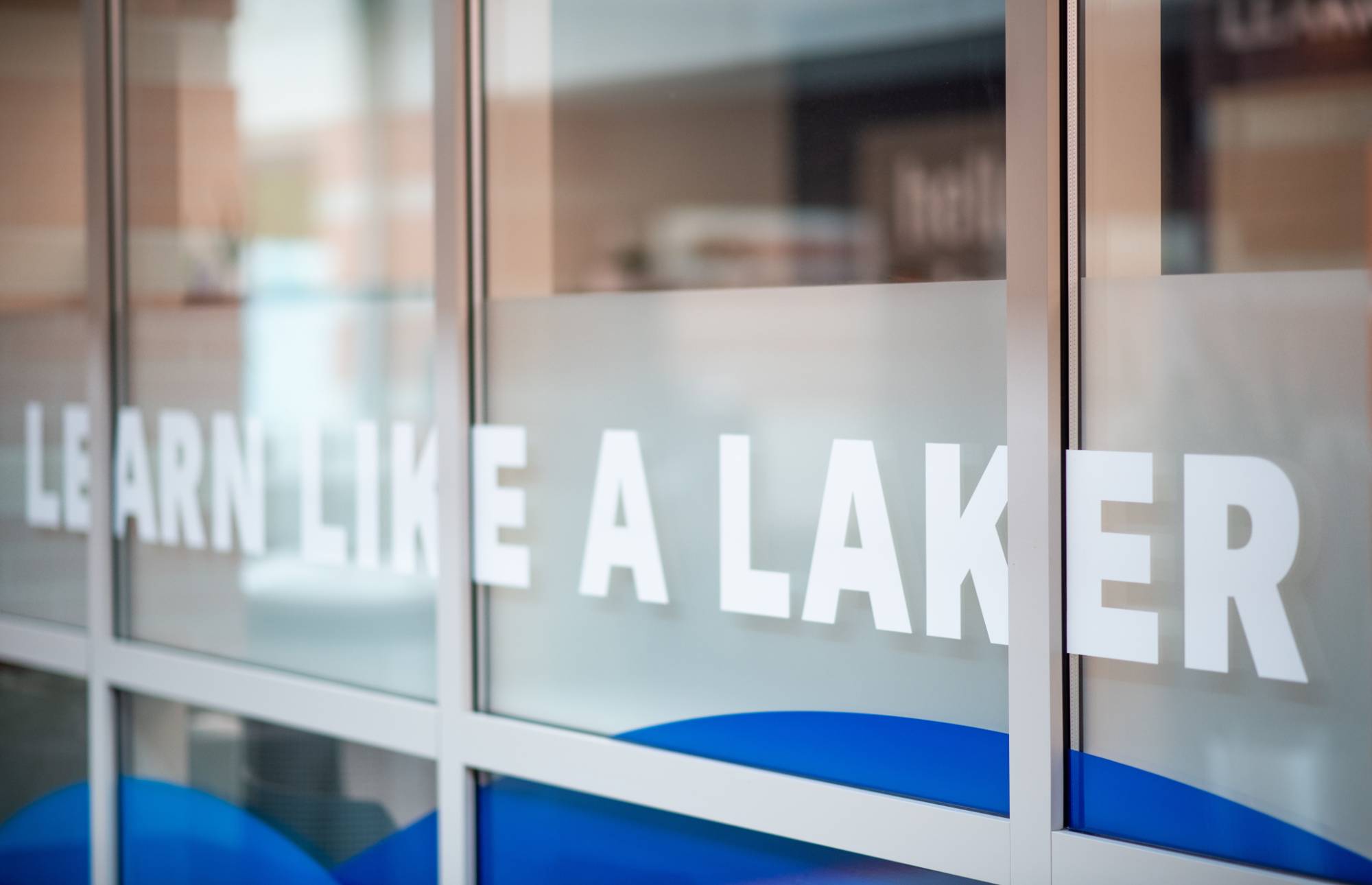Assessment at GVSU
“Are our students learning and benefitting from our programs” is the underlying question we must be able to answer, and it is assessment that provides us with the evidence to document this learning and our efforts to improve the student experience in our classes and co-curricular programs. Assessment at GVSU happens through a comprehensive, multi-level structure. The institution engages faculty, students, and administrators toward supporting a cycle of continuous improvement that ensures the quality of student education through data-informed processes.

Who Oversees Assessment at GVSU?
The University Assessment Committee (UAC), a standing committee of faculty governance, is responsible for developing the formats for the assessment reports around student learning outcomes (SLOs) and student-centered outcomes (SCOs).
Grand Valley State University uses student outcomes as the primary measure of assessment within each unit: SLOs for academic affairs programs and SCOs for some co-curricular units.
UAC is the only shared governance committee that evaluates both academic and co-curricular programs; as such, UAC membership includes individuals from outside of Academic Affairs to share the workload. The committee reviews all assessment plans, reports, and self studies (via GVAssess) while providing feedback and guidance to units for using assessment findings to drive programmatic improvements.
The UAC works closely with the Strategic Planning, Assessment, and Accreditation team to provide assistance to units for their continuous improvement activities.

What are Student Learning Outcomes (SLOs) and Student-Centered Outcomes (SCOs)?
SLOs are measurable statements of the knowledge, skills, attitudes, and habits of mind that students acquire as a result of the learning experience. SLOs define the fundamental student learning competencies for a program. SLOs focus on content mastery and skills that students should know or be able to demonstrate upon completion of the program.
SCOs are a measurable statement based on intentionally designed activities, programs, and services that reinforce the institution’s mission and values and complement the formal curriculum. SCOs are intended to be used by some co-curricular entities such as study abroad, advising centers, and many student services units.
Assessment Planning
Effective assessment planning ensures that SLOs and SCOs:
- are determined through faculty collaboration for their programs and/or requirements of accrediting agencies.
- are clear, measurable, and easily understood by students.
- appropriately address student knowledge, behavior/skills, and attitudes.
- help the institution achieve the its mission and college, departmental, and unit goals.
Assessment Implementation
Effective assessment implementation includes:
- designation of the party/parties responsible for collecting and analyzing all pieces of data;
- clarity about the audience (e.g., faculty, students, dean, alumni, etc.) and distribution of all reports/findings;
- reliable and well-defined measures of key outcomes;
- regular, frequent data collection and analysis based on a clear plan.
Assessment Follow Through
Effective follow through with assessment data includes:
- reviewing results to assess how well programs are achieving their goals;
- using results to continuously improve the educational content and learning experiences provided;
- facilitating feedback mechanisms to improve assessment processes and plans;
- sharing findings with faculty, other programs, and stakeholders as models, resources, etc.



Institutional-Level Undergraduate Student Learning Outcomes
In addition to program and unit learning outcomes above, the university has adopted the Skills Learning Outcomes of the General Education Program as institution-level SLOs for undergraduate students. These institutional level SLOs are coordinated and overseen by the General Education Committee, and they include:
- Collaboration
- Critical Thinking
- Ethical Reasoning
- Information Literacy
- Integration
- Oral Communication
- Problem Solving
- Quantitative Literacy
- Written Communication
More details on these Skills Learning Outcomes and their associated rubrics can be found on the General Education website.
Resources
Resources for assessing student learning, including development of learning objectives, rubrics, and surveys, can be found on the UAC webpage. Additional resources are available through the Pew Faculty Teaching & Learning Center, as well as on our Resources and Support page.
